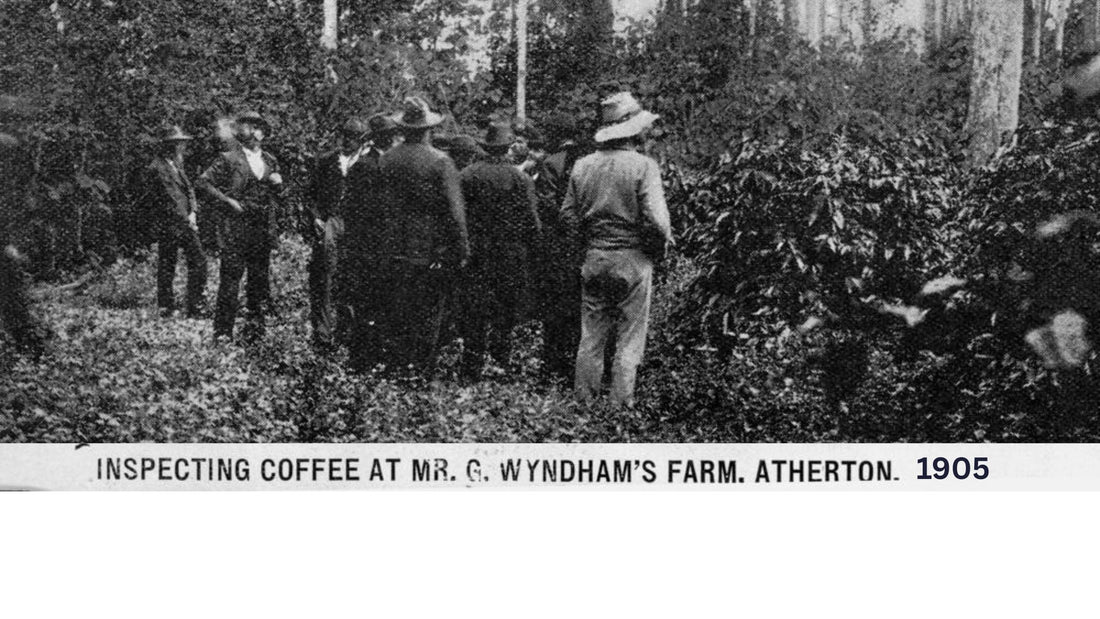Do You Guys Sell Australian Coffee?
Rhiannon Spencer
Share
Supporting local produce is important to many consumers, and we’re often asked whether our coffee is grown in Australia. While Australia is a nation passionate about coffee, less than 1% of what we consume is locally grown. This post explores some of the key challenges, opportunities, and innovations shaping the current landscape of Australian-grown coffee.
Australians often prefer to buy produce that is fresh, local, and easy to trace from farm to plate. Take something as delicate as an avocado, if you spot one in the store that's been flown in from the other side of the world, it might seem absurd to imagine the air miles it’s racked up. However, when it comes to coffee, the options for buying local beans are far more complex. Factors such as climate suitability, labour costs, and innovation all play significant roles in shaping the local industry.
Australians have a huge appetite for coffee. Collectively, we consume more than 6 billion cups per year. Our production volumes are not so huge. Amongst about only 50 farms, we produce less than 1% of what we consume, about 600 metric tonnes. In contrast, the world's highest producing coffee nation, Brazil, produces 3.7 million metric tonnes per year. Coffee was first cultivated in Australia in the 1880s but the industry fizzled out in the 1920s and wasn’t kick started again for another 50 odd years.
Coffee, as a crop, is difficult to grow and harvest. It requires specific growing conditions and is very labor intensive. Originally native to the Ethiopian highlands, coffee evolved in a high altitude, mountainous, tropical environment with warm days, cool nights, and little to no frost. “The Coffee Belt” is a term describing the equatorial band where coffee is best grown in conditions not dissimilar to Ethiopia. While Australia does have some good regions within the coffee belt, a suitable climate for growing is just one factor. Growing anything in isolation will yield different results compared to growing the same crop in its natural environment. Variables such as seasonal rainfall, soil composition, and even microbial and fungal differences at a microscopic level can all influence crop quality.
Labour availability and cost present another major challenge for Australian coffee producers. Consider a single coffee bean. This bean is a seed from inside a coffee cherry. Depending on the coffee's origin, there’s a good chance that that cherry was picked by a human who has good knowledge about when exactly to pick each individual coffee fruit. Coffee cherries ripen at different times meaning an under or over ripe cherry might be immediately beside a perfect ready to pick fruit. This picking process is incredibly labour intensive and workforces in Australia cost considerable amounts, meaning hand picking coffee cherries is not generally a fiscally viable option for local growers. Even if farms could afford to pay staff, finding them to come and work is a separate issue. Australian farms already face challenges finding workers for fruit picking and rely heavily on a visiting workforce from neighboring countries.
To address these challenges, Australia has had to lean heavily on coffee farming innovation. We were the first country to develop mechanical coffee harvesting, significantly reducing reliance on manual labour. However, mechanical harvesting lacks the precision of hand-picking, often resulting in a mix of underripe and overripe cherries. Technologies like optical sorting can help improve quality, but these systems are costly and not yet widely adopted. Furthermore, mechanical harvesting requires accessible, relatively flat terrain, unlike the steep landscapes often used for coffee farming overseas. Consider a farm on the side of a cliff in Colombia; a human can find a way to walk and climb to reach a ripe cherry whereas a large harvesting machine is not quite so flexible.
Plant selection also plays a role. In the 1980s, Australia introduced the K7 coffee variety, which is known for producing high-quality beans but can grow as tall as five metres. This size makes it unsuitable for most machinery. Pruning these trees can lead to lower yields and longer production cycles. Encouragingly, research led by the University of Southern Queensland is identifying semi-dwarf varieties that are better suited to Australian conditions. These shorter plants, which typically grow to about 2.5 to 3 metres in height, may be essential to the future of the domestic coffee industry.
So, back to the original question: is our coffee Australian? Not at the moment, but we’ll keep an eye out and maybe in the future. If we can find high-quality, affordable green beans that match the flavour profile we believe our customers will love, we would be thrilled to support Australian growers. Unlike avocados, coffee is a commodity that travels well, making global sourcing more practical for now. What will never change is our commitment to ethical sourcing. We work exclusively with importers who prioritise traceability, fair wages, and the rights of workers.
